How Much Energy, Protein and Fat is in Wild Foods?
The biggest compilation of wild edibles and wild game nutritional information ever.
Reflecting back on my 6 months wilderness adventure: I did not eat as many bunchberries as I could have. At that time I did not know that they have a higher amount of calories than blueberries.
That’s why I’ve decided to make this Wild Game and Edibles Nutritional Info Cheat Sheet.
For wilderness living food is of utmost importance. One must focus on gathering food that yields a lot of calories. Meeting protein requirements is also relevant, but more important than those is the accessibility and abundance of wild foods.
Wild Edibles Nutritional Info:
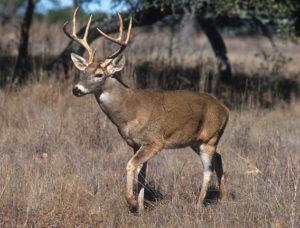
Mammals
| Raw portion 3.5 oz / 100g | Calories | Protein % | Fat % | Raw portion 3.5 oz / 100g | Calories | Protein % | Fat % | |
| Anthelope | 114 | 22.3 | 2.03 | Goat (roasted) | 143 | 27.1 | 3 | |
| Beaver | 146 | 24.05 | 4.8 | Moose | 102 | 22.4 | 0.74 | |
| Bear | 161 | 20.1 | 8.3 | Muskrat | 162 | 20.76 | 8.1 | |
| Buffalo | 99 | 20.39 | 1.37 | Opossum (roasted) | 221 | 30.2 | 10.2 | |
| Caribou | 127 | 22.63 | 6.42 | Rabbit | 114 | 21.79 | 2.32 | |
| Deer | 120 | 22.96 | 2.42 | Squirrel | 120 | 21.3 | 3.21 | |
| Elk | 111 | 22.95 | 1.45 | Wild Boar | 122 | 21.51 | 3.33 |
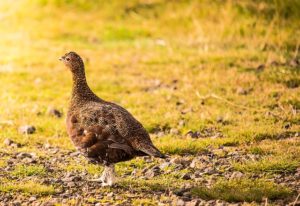
Birds
| Raw portion 3.5 oz / 100g | Calories | Protein % | Fat % | Raw portion 3.5 oz / 100g | Calories | Protein % | Fat % | |
| Goose, Canada (meat only) | 133 | 24.3 | 4 | Pheasant | 133 | 23.57 | 3.64 | |
| Duck (meat only) | 123 | 19.8 | 4.25 | Wild Turkey (meat only) | 112 | 22.64 | 1.93 | |
| Grouse, Ruffed | 112 | 25.9 | 29.3 |
Reptiles
| Raw portion 3.5 oz / 100g | Calories | Protein % | Fat % | Raw portion 3.5 oz / 100g | Calories | Protein % | Fat % | |
| Alligator | 143 | 3 | 29 | Green Turtle | 89 | 0.5 | 19.8 | |
| Frog (legs) | 73 | 0.3 | 16.4 |
Insects
| Dry portion 3.5 oz / 100g | Calories | Protein % | Fat % | Dry portion 3.5 oz / 100g | Calories | Protein % | Fat % | |
| Crickets | 120 | 9.6 | 5.6 | Mealworm | 138 | 20 | 13 | |
| Grasshopper | 96 | 14.3 | 3.3 | Red Ants (cooked) | 194 | 12.7 | 12.5 | |
| June beetle | 78 | 14.3 | 3.3 | Termites | 124 | 12.4 | 1.3 | |
| Locust | 179 | 18 | 21.5 | Witchetty Grub | 325 | 16 | 29 |
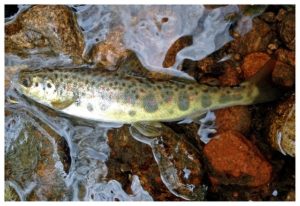
Fish and Seafood
| Raw portion 3.5 oz / 100g | Calories | Protein % | Fat % | Raw portion 3.5 oz / 100g | Calories | Protein % | Fat % | |
| Bass (Small & Largemouth) | 104 | 18.8 | 2.6 | Pompano | 166 | 18.8 | 9.5 | |
| Bluefish | 117 | 20.5 | 3.3 | Porgy and Scup | 112 | 19 | 3.4 | |
| Buffalo fish | 113 | 17.5 | 4.2 | Red, Gray Snappers | 93 | 19.8 | 0.9 | |
| Bullhead | 84 | 16.3 | 1.6 | Redhorse, Silver | 98 | 18 | 2.3 | |
| Burbot (Lawyer) | 82 | 17.4 | 0.9 | Rockfish | 97 | 18.9 | 1.8 | |
| Butterfish | 169 | 18.1 | 10.2 | Roe (Carp, Cod, Haddock, Herring, Pike & Shad) | 130 | 24.4 | 2.3 | |
| Carp | 115 | 18 | 4.2 | Roe (Salmon, Sturgeon & Turbot) | 207 | 25.2 | 10.4 | |
| Catfish (freshwater) | 103 | 17.6 | 3.1 | Sablefish | 190 | 13 | 14.9 | |
| Caviar (Sturgeon) | 262 | 15 | 26.9 | Salmon, Atlantic | 217 | 22.5 | 13.4 | |
| Chiton, Gumboot | 83 | 17.1 | 1.6 | Salmon, Chinook (King) | 222 | 19.1 | 15.6 | |
| Chub | 145 | 15.3 | 8.8 | Salmon, Chum | 120 | 20.1 | 3.7 | |
| Clam (meat only) | 82 | 14 | 1.9 | Salmon, Coho (Silver) | 136 | 21.5 | 5.7 | |
| Cod | 78 | 17.6 | 0.3 | Salmon, Pink | 119 | 20 | 3.7 | |
| Crab (cooked, steamed) | 93 | 17.3 | 1.9 | Salmon, Sockeye (Red) | 143 | 20.3 | 6.9 | |
| Crappie | 79 | 16.8 | 0.8 | Sauger | 84 | 17.9 | 0.8 | |
| Crayfish (freshwater) | 72 | 14.6 | 0.5 | Scallop (Bay and Sea) | 81 | 15.3 | 0.2 | |
| Croaker | 96 | 17.8 | 2.2 | Sea Cucumber | 56 | 13 | 0.4 | |
| Cusk | 75 | 17.2 | 0.2 | Sea Urchin | 172 | 13.2 | 2.82 | |
| Dogfish, spiny (Grayfish) | 156 | 17.6 | 9 | Seabass (White) | 96 | 21.4 | 0.5 | |
| Drum, Freshwater (Sheeps head) | 121 | 17.3 | 5.2 | Shrimp | 91 | 18.1 | 0.8 | |
| Eel, American | 233 | 15.9 | 18.3 | Skate | 98 | 21.5 | 0.7 | |
| Flounder | 79 | 16.7 | 0.8 | Slipper Shell | 61 | 8.4 | 1.8 | |
| Grouper | 87 | 19.3 | 0.5 | Smelt (Eulachon) | 98 | 18.6 | 2.1 | |
| Haddock | 79 | 18.3 | 0.1 | Snail | 90 | 16.1 | 1.4 | |
| Hake | 74 | 16.5 | 0.4 | Sole | 79 | 16.7 | 0.8 | |
| Halibut | 100 | 20.9 | 1.2 | Spanish Mackerel | 177 | 19.5 | 10.4 | |
| Lake Herring (Cisco) | 96 | 17.7 | 2.3 | Squid | 84 | 16.4 | 0.9 | |
| Lake Trout | 168 | 18.3 | 10 | Sturgeon (see also Caviar) | 94 | 18.1 | 1.9 | |
| Lake Trout (Siscoette, Over 6.5 lbs) | 524 | 7.9 | 54.4 | Sucker | 104 | 20.6 | 1.8 | |
| Lake Trout (Siscoette, Under 6.5 lbs) | 241 | 14.3 | 19.9 | Swordfish | 174 | 28 | 6 | |
| Lingcod | 84 | 17.9 | 0.8 | Tautog (Blackfish) | 89 | 18.6 | 1.1 | |
| Lobster (whole) | 91 | 16.9 | 1.9 | Tilapia | 88 | 22 | 4.4 | |
| Mullet, Striped | 146 | 19.6 | 6.9 | Tilefish | 79 | 17.5 | 0.5 | |
| Muskellunge (Musky) | 109 | 20.2 | 2.5 | Trout, Brook | 101 | 19.2 | 2.1 | |
| Mussels (meat only) | 95 | 14.4 | 2.2 | Trout, Rainbow (Steelhead) | 195 | 21.5 | 11.4 | |
| Octopus | 73 | 15.3 | 0.8 | Tuna (raw) | 145 | 25.2 | 4.1 | |
| Oyster (meat only) | 66 | 8.4 | 1.8 | Turtle | 89 | 19.8 | 0.5 | |
| Perch, Ocean (Redfish) | 88 | 18 | 1.2 | Walleye | 93 | 19.3 | 1.2 | |
| Perch, Yellow (Lake Perch) | 91 | 19.5 | 0.9 | Weakfish | 121 | 16.5 | 5.6 | |
| Pike, Northern | 88 | 18.3 | 1.1 | Whitefish, Lake (freshwater) | 155 | 18.9 | 8.2 | |
| Pollack | 95 | 20.4 | 0.9 | Whiting | 105 | 18.3 | 3 |
Plants
| Raw portion 3.5 oz / 100g | Calories | % Protein | % Fat | Raw portion 3.5 oz / 100g | Calories | % Protein | % Fat | |
| Acorn (raw) | 387 | 6.15 | 23.86 | Perennial lily root | 95.4 | 1.4 | 0.2 | |
| Arrowroot | 65 | 4.24 | 0.2 | Persimmon | 127 | 0.8 | 0.4 | |
| Balsam Poplar (bark) | 230 | 1.9 | – | Pigweed | 56 | 6 | 0.9 | |
| Bitterroot (dry) | 343 | 4 | 0.6 | Plantain, Greater (leaves) | 61 | 2.5 | 0.3 | |
| Black cottonwood | 31 | 0.2 | 0.5 | Prickly Pears | 42 | 0.12 | 0.11 | |
| Black hawthorn | 73 | 0.3 | 1.4 | Purslane | 20 | 2.3 | 0.36 | |
| Black Walnuts | 607 | 25.4 | 58.9 | Red elderberry | 110 | 2.9 | 4.8 | |
| Blackcap raspberry | 87 | 1.2 | 1.4 | Red huckleberry | 56 | 0.8 | 0.5 | |
| Bog blueberry | 51 | 0.7 | 0.6 | Rice roots (riceroot) | 102 | 2.9 | 0.3 | |
| Bunchberry | 76 | 0.6 | 0.8 | Rosehip | 82 | 1.6 | 0.6 | |
| Burdock root | 72 | 1.53 | 0.15 | Salal berries | 63 | 2.1 | 0.7 | |
| Butternut | 629 | 23.7 | 61.2 | Salmonberry | 52 | 1.4 | 0.8 | |
| Cattail rhizome (dry) | – | 7.7 | 4.9 | Salmonberry shoots | 31 | 0.5 | 0.6 | |
| Cattail shoots | 25 | 1.18 | 0 | Saskatoon berry | 99 | 0.7 | 1.2 | |
| Chokecherry (pitted) | 162 | 3.04 | 1.69 | Seaweed, Kelp | 43 | 1.68 | 0.56 | |
| Cottonwood (inner bark) | 27 | 0.2 | 0.5 | Seaweed, laver (dry) | 303 | 24.4 | 1.4 | |
| Cow parsnip stems | 20 | 0.2 | 0.3 | Sheep sorrel | 48 | 1.1 | 0.6 | |
| Crowberry | 45 | 0.2 | 0.7 | Shepherd’s Purse | 33 | 3 | 0.5 | |
| Curly Dock | 24 | 2.6 | 0.3 | Silverweed roots (steamed) | 136 | 3.1 | 0.6 | |
| Dandelion Greens | 45 | 2.7 | 0.7 | Soapberry | 80 | 1.8 | 0.7 | |
| Desert parsley roots | 190 | 2.2 | 1 | Sow Thistle | 20 | 1.9 | 0.3 | |
| Dulse (red algae) dry fronds | 323 | 19.9 | 0.6 | Spiny wood fern | 128 | 2.5 | 1 | |
| Fireweed shoots | 30 | 0.3 | 0.4 | Springbank clover rhizomes | 73 | 0.7 | 0.5 | |
| Goosefoot, Lamb’s Quarters | 43 | 4.2 | 0.8 | Stinging Nettle | 44 | 1.8 | 0.6 | |
| Grey blueberry | 54 | 1.1 | 0.5 | Stink currant | 70 | 0.8 | 1.2 | |
| Hazelnut, Beaked | 628 | 14.89 | 52.99 | Sugar Maple syrup | 348 | 0.1 | – | |
| Hickory nuts (dried) | 657 | 12.7 | 64.37 | Swamp gooseberry | 66 | 1.5 | 2.3 | |
| Highbush cranberry | 42 | 0.1 | 0.4 | Thimbleberry | 110 | 1.7 | 1.2 | |
| Horsetails | 20 | 2.1 | – | Thimbleberry shoots | 28 | 0.6 | 0.4 | |
| Jerusalem artichoke | 77 | 2.6 | 0.5 | Trembling Aspen | – | 1.3 | – | |
| Kelp, Laminaria | 43 | 1.7 | 0.6 | Wapato (Arrowhead) | 99 | 5.33 | 0.29 | |
| Kinnikinnick berry | 102 | 0.7 | 1.1 | Watery Blueberry | 74 | 0.9 | 0.6 | |
| Lambsquarters | 41 | 3.3 | 0.6 | Western Hemlock (cambium) | 103 | 2.3 | 0.6 | |
| Licorice fern root | 141 | 0.9 | 4.6 | Wild black gooseberry | 77 | 1.1 | 1.5 | |
| Lupine root | 73 | 2 | 0.4 | Wild blue currant | 65 | 0.7 | 0.6 | |
| Mountain Alder bark | 270 | 4.3 | – | Wild Leek, Ramp | 61 | 1.5 | 0.3 | |
| Mountain bilberry | 59 | 0.6 | 0.5 | Wild Onion | 42.2 | 3.5 | 0.2 | |
| Mulberries | 43 | 1.44 | 0.39 | Wild raspberry | 73 | 0.6 | 0.8 | |
| Ostrich fern (dried) | 376 | 36 | 4 | Wild Rice | 357 | 14.73 | 1.08 | |
| Pacific crabapple | 79 | 1.2 | 1.6 | Wild Strawberry | 61 | 0.6 | 0.9 | |
| Parsnip | 75 | 1.2 | 0.3 | Wood Sorrel | 49 | 2.3 | 0.8 | |
| Pawpaw | 85 | 5.2 | 0.9 |
Mushrooms and Fungi
| Dry portion 3.5 oz / 100g | Calories | Protein % | Fat % |
| Black trumpets, Craterellus cornucopioides | 378 | 69.45 | 4.88 |
| Cauliflower Mushroom, Sparassis Crispa | 283 | 32.6 | 5.2 |
| Chanterelle, Cantharellus cibarius | 381 | 35.7 | 1.4 |
| Chicken of the woods, Laetiporus sulphureus | 341 | 10.6 | 2.96 |
| Hedgehog Mushroom, Hydnum repandum | 434 | 34 | 6.3 |
| Lion’s Mane or Bear’s Head, Hericium | 190 | 22.3 | 3.52 |
| Morel, Morchella | 323 | 41.7 | 12 |
| Oyster mushroom, Pleurotus ostreatus | 193 | 23.8 | 2.1 |
| Porcini Mushroom, Boletus edulis | 159 | 18 | 5.7 |
Download a PDF version: Top Wild Game and Edibles Nutritional Info Cheatsheet PDF
How do you weigh things in the wild?
You can make a steelyard balance in the field by using a water bottle with measuring markings and using water to accurately calibrate it. For instance, after knowing how much a liter of berries weighs, you can find out how much energy you have gathered.
Sources
- USDA Food Composition Databases: https://ndb.nal.usda.gov/ndb/search/list
Fish and Seafood
- Fish, Low in Calories High in Nutrition: https://aqua.wisc.edu/publications/PDFs/LowCaloriesHighNutrition.pdf
- Nutritional Study of Seven Molluscan Species: http://www.pcas.org/documents/BoxtandMillerweb.pdf
- Seafood Handbook: https://www.seafoodsource.com/seafood-handbook/
- Sea Urchin Nutritional Information: http://www.puha.org/assets/sea-urchin-nutritional-information.asp
- What I ate for 57 days on Vancouver Island on the TV show Alone: https://www.nicoleapelian.com/blog/ate-57-days-vancouver-island-tv-show-alone/
Plants
- Nutrient Values of Traditional Plant Foods: http://www.fao.org/wairdocs/other/ai215e/AI215E08.htm
- First Nations Traditional Foods Factsheets: http://www.fnha.ca/wellnessContent/Wellness/Traditional_Food_Facts_Sheets.pdf
- Nutritional Composititon of Wild Food Plants: http://www.motherearthnews.com/-/media/Images/MEN/Editorial/Articles/Magazine-Articles/1986/07-01/Discover-the-Nutritional-Value-of-Wild-Foods/100-082-01tab.jpg
Insects
- Edible insects Future prospects for food and feed security: http://www.fao.org/docrep/018/i3253e/i3253e.pdf
- Entomophagy, the consumption of insects as food: http://www.scmp.com/infographics/article/1238110/entomophagy-consumption-insects-food
- Nutrition of the Tamandua: https://www.researchgate.net/profile/Eduardo_Valdes2/publication/238691775_Nutrition_of_the_Tamandua_I_Nutrient_composition_of_termites_Nasutitermes_spp_and_stomach_contents_from_wild_tamanduas_Tamandua_tetradactyla/links/542c02a60cf29bbc126af323.pdf
- Development of regional standard for Edible Crickets and their products: ftp://ftp.fao.org/codex/Meetings/CCASIA/ccasia17/CRDS/AS17_CRD08x.pdf
Mushrooms
- Nutritional values and antioxidant potential of some edible mushrooms of Kashmir valley: https://pdfs.semanticscholar.org/a4cb/b643c022dfe3db103d4c66363ed35a77adcf.pdf
- Wild and commercial mushrooms as source of nutrients and nutraceuticals: https://bibliotecadigital.ipb.pt/bitstream/10198/743/1/Wild%20and%20commercial%20mushrooms%20as%20source%20of%20nutrients%20and%20nutraceuticals.pdf
- Chemical composition of the mushroom Laetiporus sulphureus: https://www.researchgate.net/publication/273483883_Chemical_composition_of_the_mushroom_Laetiporus_sulphureus_Bull_Murill
- Nutritional Composition of Some Wild Edible Mushrooms: http://www.turkjbiochem.com/2009/025-031.pdf
- Nutrient Compositions of Culinary-Medicinal Mushroom Fruiting Bodies and Mycelia: https://www.researchgate.net/profile/Jeng-Leun_Mau/publication/51874169_Nutrient_Compositions_of_Culinary-Medicinal_Mushroom_Fruiting_Bodies_and_Mycelia/links/00b495300b83560eb9000000.pdf
- A review of chemical composition and nutritional value of wild-growing and cultivated mushrooms: https://www.researchgate.net/publication/233745831_A_review_of_chemical_composition_and_nutritional_value_of_wild-growing_and_cultivated_mushrooms

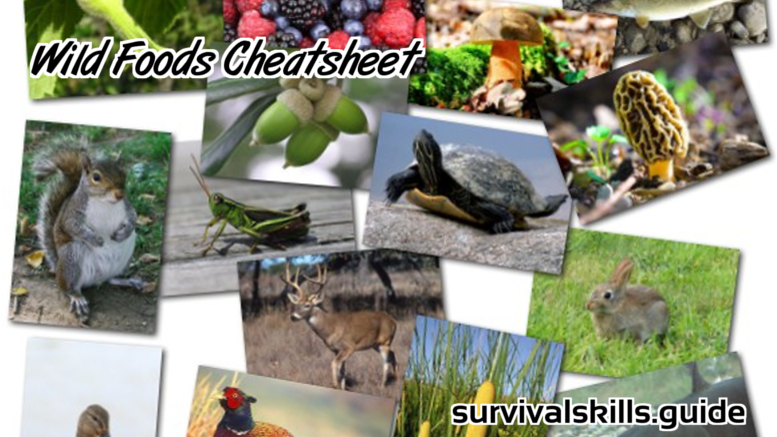
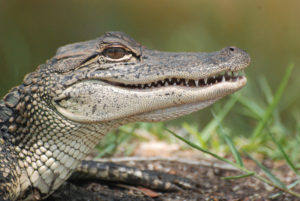
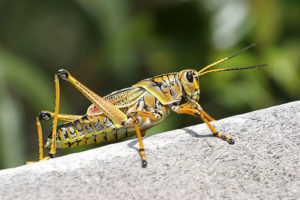
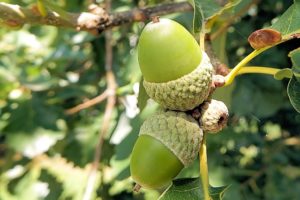
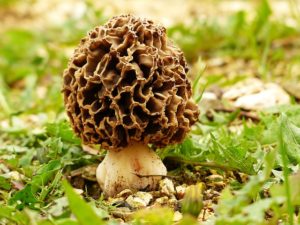
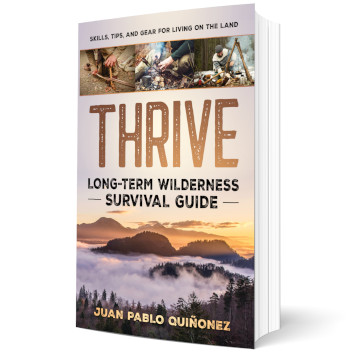
Wow! This is the first time I have ever seen a table like this of wild food sources. Great information. You really put some work into it. Thanks!
This is incredible. I was going to copy/paste into Word and then print,and then there is a link to a .pdf at the end? Fantastic! Just found this site, am going to go through every post of interest. Thanks for not offering the same type of posts with the same opinion as every other site,variety and new information is key. I thirst for knowledge!
This is a great chart but it’s missing one main way to determine what’s really a good source of calories, volume.
According to the chart parsnips are only about 40% higher in calories than dandelions, yet parsnips have been a staple food for thousands of years while dandelions are just a pot herb. It turns out 100g of dandelions is about 2 cups, while 100g of parsnips is just ¾ of a cup. So in other words, parsnips are 40% higher in calories than dandelions by weight, but 400% higher by volume. The volume of dandelions needed to get 2,500 calories is so ridiculously high, 111 cups of greens, that it’s simply impossible to eat that much unless you are a cow, with a stomach built for the job. Likewise, the stats for mushrooms seem quite high at first until I realized it was for dried mushrooms. Mushrooms dry to about 10% of their fresh weight, meaning 100g of dried mushrooms is actually 1000g of fresh mushrooms. That’s about 8 cups in volume. You can literally starve to death with a stomach full of greens or mushrooms. I can eat a couple cups of dandelions or other greens a day but that will barely make an impact on my calories. However I can eat several cups of parsnips a day and along with some meat and nuts can reach my caloric needs. Greens, mushrooms and fruit are there mainly for the micronutrients and because they taste good. Also of note is that staple foods like meat and roots contain far less anti-nutrients than others. Your body knows this, that’s why it’s a lot easier to eat way more than 100 grams of meat at one sitting, but 100 grams of bitter greens is pushing it even regardless of the volume.